What Is Parasomnia and How to Deal with It?
written by / March 4, 2020

Many sleep disturbances, such as sleep-related eating disorders, sleepwalking and talking in sleep, nightmares, sleep paralysis, impaired sleep behavior during REM sleep, sexual behavior while sleeping, which are altogether called parasomnia, are becoming more common nowadays. But what is parasomnia? In short, the term parasomnia refers to all the unusual or strange things that people do while sleeping.
Usually, parasomnias can have adverse effects and health consequences during the day on those suffering from it. One of the reasons for that might be restless sleep, which often leads to daytime drowsiness and even injuries.
How Common Is Parasomnia?
Parasomnias can occur while one is falling asleep, waking up, or at any time during the sleep cycle. For example, a person suffering from a parasomnia may experience sleep paralysis or hallucinations. Both conditions can be very frightening; the former is often accompanied by the impossibility to move for seconds or minutes, and the latter by various distressing images.
Other parasomnias that occur during sleep include dynamic and harmful sleep-inducing behaviors. Among parasomnia examples is REM sleep behavior disorder (RBD), which is a brain disorder that typically occurs in men over 50. However, RBD can affect people of any age that are taking certain medications, such as antidepressants, as well as people with neurological disorders (i.e., Parkinson’s disease, narcolepsy, or stroke).
Parasomnias affect approximately 10% of the US population. These disorders are found in people of all ages but are more common in children. Children are particularly vulnerable to brain immaturity. The good news is that they are not usually associated with adverse health effects, and they often disappear as the child matures.
Nowadays, parasomnia disorders are an increasingly common problem. Sufferers’ behavior is often characterized by many strange actions that they may do while sleeping.
What Are the Parasomnia Causes?
Parasomnias often run in families, so it is possible that there is a genetic factor. However, brain disorders may also be responsible for some of the parasomnia cases, especially those happening during the REM phase of sleep. Parasomnia can also be caused by other sleep disorders, such as obstructive sleep apnea, and by various medications or circadian rhythm disorders.
Unconscious manifestations of parasomnia during sleep should not be neglected, as they can be a severe problem for a person’s health. Eating while sleeping, for example, is a common sleep parasomnia. Patients would eat and even cook several times a night – and in the morning, they would not remember anything. This sometimes happens to people on a strict diet. In these cases, eating during the night is an answer to the deprivation during the day, and consequently, even a balanced diet cannot lead to the desired results.
In most cases, those affected by sleep parasomnia do not remember any of the things they have done during the night. It is most often the result of stress, which affects the quality of sleep.
But perhaps the most curious and slightly frightening is the fact that one can have sex while sleeping, which is called sexual parasomnia or sexsomnia. For most people, this is a significant problem, and for some, it can be a nightmare. One thing is for sure – it can be a manifestation of psychological problems.
Even though sleep experts can quickly give an answer to the question, What is parasomnia, they are conflicted on the question about the specific causes of the problem. However, they still agree that quality rest is essential to reducing the risk of developing parasomnia. Therefore, it’s extremely important to ensure a comfortable sleep environment and strive to avoid stress.
Parasomnia Types
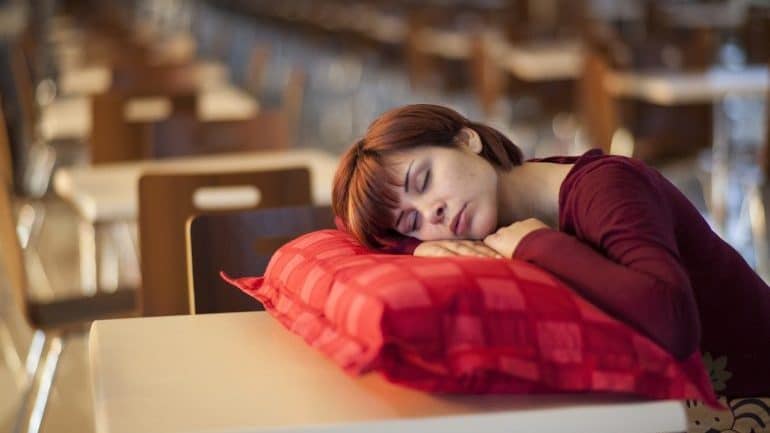
Parasomnias are sleep disturbances that are characterized by unwanted movements, behaviors, emotions, perceptions, and verbal activities during sleep or wakefulness.
Parasomnias can be divided into the following categories:
Primary parasomnias
These types of parasomnia are disorders of the sleep phases. They are classified according to the sleep phase during which they occur – mainly during the REM phase or non-REM (NREM). Primary parasomnias are characterized by the simultaneous manifestation of elements of wakefulness and sleep.
Secondary parasomnias
They are related to different diseases of the organs and systems in the organism that can occur during sleep, such as seizures, breathing disorders, cardiac arrhythmias, reflux of the gastric contents, etc.
Classification of Parasomnias According to the Stage of Sleep
The International Classification of Sleep Disorders (ICSD), and specifically its newest 3rd edition classifies parasomnias in relation to when they occur – during wakefulness, REM sleep phase, NREM sleep phase, as well the combination of these states.
NREM Parasomnia Disorders
NREM parasomnias are awakening disorders that occur during NREM sleep. They are caused by a physiological activation between arousal and sleeping. Usually, these types of parasomnias involve the activation of the motor system, autonomic nervous system, and cognitive functions of the central nervous system during sleep or sleep-wake transitions.
Most of the NREM parasomnias are common during childhood but decrease with age. Alcohol abuse, physical activity, emotional stress and anxiety, depression, sleep deprivation, certain medications, and fever can trigger these non-REM parasomnia conditions.
NREM-related disorders described extensively in our blog are: sleepwalking (somnambulism), teeth grinding, restless legs syndrome, and sleeptalking (somniloquy). The others are the following:
Confusional arousals
This is a disorder characterized by awakening from sleep but remaining in a confused state. The episodes usually last up to a few minutes, during which the individual opens their eyes, sits up, looks around, and sometimes returns to bed. It can affect up to 18.5% of children. Plus it’s the most common type of parasomnia in toddlers. Rarely, it can cause injuries since the children sometimes move too much and fall out of their bed, or similar.
Sleep-related abnormal sexual behavior
The so-called sexsomnia is a form of the above-described confusional arousal that may overlap with somnambulism. The actions related to this disorder include unconscious masturbation, inappropriate fondling of themselves or whoever is next to them, having sex with another person, and even sexual assault. The incidence of this parasomnia is about 7.1%, and the real concerns are associated with social, clinical, and legal problems.
Sleep terrors (night terrors/ pavor nocturnus)
A common parasomnia – night terrors – includes the most troublemaking arousal disorder. It is a dangerous condition because of the confusion of the affected person, which is often followed by screaming, running, and even accidentally hurting themselves. Usually, the sufferers do not remember the episodes. The disorder is most common in adults (up to 3%), and especially in those who suffer from a violent post-traumatic stress disorder.
Sleep-related eating disorder
This disorder, also called a nocturnal sleep-related eating disorder, is classified as a mixture of sleepwalking and arousal disorders. In this parasomnia sleep disorder, favorably high-caloric food is consumed in an uncontrolled manner – unlike the other disease, nocturnal eating syndrome, where people are fully conscious. Here, the episodes of the condition can sometimes be reduced if the underlying cause of this disorder is identified and treated.
REM Parasomnia Disorders
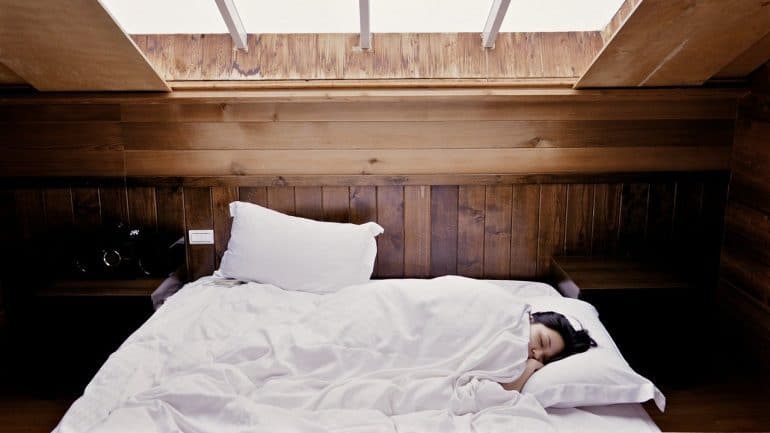
Some types of sleep disorders related to parasomnias include:
REM sleep behavior disorder
The most common symptom of this disorder is absent muscle atonia during REM sleep. This results in an increased risk of injuries – bruises, lacerations, and fractures – to themselves or others. Sometimes, protection is needed, such as pillow barricades, tethering to bed, ensuring a safe sleep environment (even sleeping on a mattress in an empty room). In terms of recommended parasomnia medication, clonazepam is a good choice after excluding sleep apnea. Typically, the affected people are men over 50 years of age. However, this REM sleep disorder condition happens to women also, but it is usually mild, and few cases are reported.
An acute form of the disease can occur when people are on antidepressants, as well as after substance abuse or withdrawal. The chronic form is related to neurodegenerative disorders, such as Parkinson’s disease, multiple system atrophy, or dementia. Furthermore, it can also be an early sign of these diseases, which tend to occur up to ten years earlier.
Catathrenia
Though classified as REM parasomnia, symptoms suggest that the condition is also a sleep-related breathing disorder different from somniloquy and obstructive sleep apnea. The breath-holding and the typical sounds that accompany this disorder occur during exhalation as opposed to snoring, which happens during inhalation. Like other disorders, this condition reduces the quality of sleep for the affected person and their partners.
Sleep-related painful erections
This atypical sexual parasomnia is characterized by painful erections that occur only during the REM sleep. It is assumed that hypertonia of the pelvic floor could be the cause of the condition, although there is no visible physical damage. The condition can be treated effectively with various antidepressants and beta-blockers.
Other REM-related parasomnias are sleep paralysis and different types of nightmares, discussed as distinct materials in our blog. Nightmare definition includes an experience that produces a feeling of anxiety or terror, whereas night terrors vs nightmares differ with the prominent physical and emotional actions taken during the former condition.
Other parasomnias
It might be difficult to answer the question, What is parasomnia, considering there are so many different types of this sleep disorder. It also includes the exploding head syndrome, sleep-related hallucinations, sleep enuresis (nocturnal enuresis), nonspecific parasomnia, or parasomnias due to another medical disorder, medication, or substance. Dyssomnias, on the other hand, are primary sleep disorders affecting the amount, quality, or timing of sleep, and they can also lead to the inability to sleep. Therefore, when we are talking about dyssomnia vs parasomnia, we have to distinguish them in order to administer the proper treatment.
What Is the Treatment for Parasomnia?
In most cases, parasomnias do not require medication because of their low incidence and overall impact on the quality and duration of sleep. However, when parasomnias are associated with anxiety and intense fear, it is advisable to consult the appropriate sleep disorder specialist.
It is necessary to rule out sleep deprivation, and other causes such as intoxication or withdrawal, as well as some other potential underlying medical conditions. Taking into consideration the patient’s anamnesis, including the timing and elements of the events, as well as investigating the presence of parasomnia and dyssomnia in the family, can be beneficial for diagnosing them correctly.
In cases where a specific cause is suspected (alcohol, medication, etc.), the goal is to limit the main factor as much as possible. The use of various relaxation techniques and adherence to a particular sleep pattern in the evening can also be beneficial in cases where stress plays a crucial role in the occurrence of parasomnias.
If you have ever wondered how to treat parasomnia, it is important to mention that many people with parasomnias have managed to alleviate their symptoms by improving their sleep habits. Healthy sleep habits include adhering to a regular sleep schedule, stress management, a relaxing bedtime routine, and enough quality and quantity of sleep. There are also medications used to control the symptoms.
Moreover, it is essential to seek medical advice if the condition disrupts a person’s sleep or if it starts affecting their partner or roommate. The same is advisable if there are alarming symptoms or if the number of episodes increases.
Additionally, it is important to keep in mind that no matter how bizarre or violent the behavior, parasomnia in children and adults is rarely associated with a psychiatric disorder. Nevertheless, people who suffer from parasomnia often feel ashamed because of their symptoms and behavior.
However, children do not need parasomnia treatment with medications or medical intervention, because they usually grow out of these conditions, especially the NREM-related ones.
FAQs
Is Parasomnia a Mental Illness?
Parasomnias are considered as undesirable physical, behavioral, or mental phenomena that occur exclusively during falling asleep, during sleep, or during the transition from sleep to arousal. Although the symptoms can be related to some other psychiatric disorder or can be a predisposition to one, parasomnias are not a mental disease.
What Is the Difference Between a Dyssomnia and Parasomnia?
The main difference between parasomnia and dyssomnia is that the former group of sleep disorders is characterized by abnormal activities during sleep (or during the beginning or final stages of it), whereas the latter sleep disorders cause trouble falling asleep or staying asleep. However, both conditions affect the quality and quantity of sleep and can reduce the quality of life of those suffering from them.
Can You Sleep Without Knowing It?
Research has shown that it is possible to sleep without knowing it. Furthermore, attempting to awaken the “parasomniac in action” – especially by shaking the person or shouting at them – can sometimes provoke a violent response. Therefore, what you should do is carefully guide the person back to their bed by speaking to them softly and directing them gently.
Is Parasomnia Genetic?
Since these disorders run in families, it can be said that they are genetic. But how can a person be protected from developing parasomnia? If the person has a strong genetic predisposition, whether the condition will develop or not depends mainly on the environmental factors.
Conclusion
What is parasomnia? What exactly happens in the human brain during these strange reactions? It’s still a mystery. And it is mainly due to the fact that collecting data on this problem can be challenging. People are rarely in a clinical setting when they fall into the state of parasomnia. And, as mentioned, those suffering from it usually do not remember any of the experiences.
The good thing, though, is that modern equipment has allowed us to enter the homes of people suffering from parasomnia without disturbing their privacy, which can undoubtedly help scientists clarify the matter.


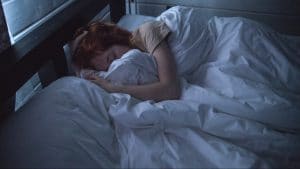




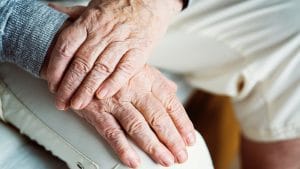
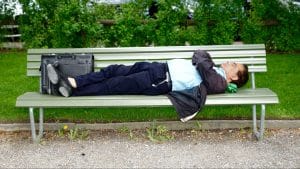
Warning: Undefined array key "format" in /home/602518.cloudwaysapps.com/cspedpjass/public_html/wp-content/themes/disturbmenot/template-parts/post-item/post-comment.php on line 23
Warning: Undefined variable $commenter in /home/602518.cloudwaysapps.com/cspedpjass/public_html/wp-content/themes/disturbmenot/template-parts/post-item/post-comment.php on line 27
Warning: Trying to access array offset on value of type null in /home/602518.cloudwaysapps.com/cspedpjass/public_html/wp-content/themes/disturbmenot/template-parts/post-item/post-comment.php on line 27
Warning: Undefined variable $commenter in /home/602518.cloudwaysapps.com/cspedpjass/public_html/wp-content/themes/disturbmenot/template-parts/post-item/post-comment.php on line 29
Warning: Trying to access array offset on value of type null in /home/602518.cloudwaysapps.com/cspedpjass/public_html/wp-content/themes/disturbmenot/template-parts/post-item/post-comment.php on line 29